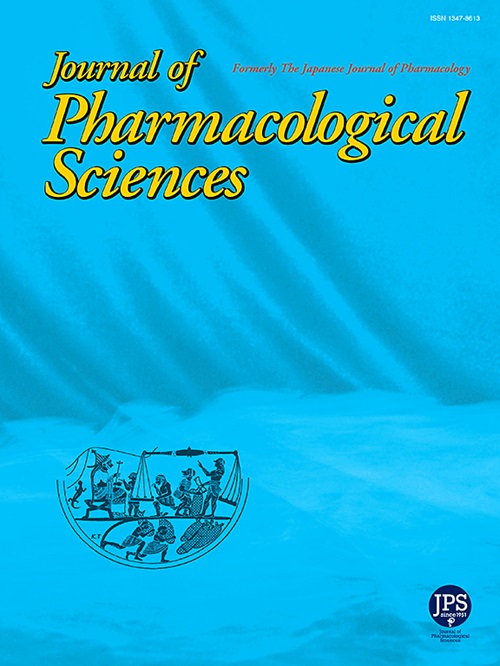磺胺吡啶破坏TNFα和TNFR1之间的相互作用,从而抑制NF-kB信号激活,促进骨折愈合
IF 2.9
3区 医学
Q2 PHARMACOLOGY & PHARMACY
引用次数: 0
摘要
骨折是一种常见的创伤类型,促进骨折愈合的替代疗法是必要的。本研究的目的是通过体外培养MC3T3-E1细胞和小鼠股骨骨折模型来阐明磺胺氮嗪在骨折愈合中的作用。Western blotting、流式细胞术、RNA测序、Calcein AM/PI染色、茜素红- s染色、ALP活性测定、透射电镜、组织学染色、免疫组织化学、免疫荧光和表面等离子体共振分析。在可接受的剂量范围内,柳氮磺胺吡啶不能诱导成骨细胞铁下垂,但能促进成骨分化。此外,磺胺吡啶通过降低炎症生物标志物来抑制炎症。此外,tnf - α被证实是磺胺氮嗪的潜在下游靶点,由于tnf - α与磺胺氮嗪之间的直接结合,tnf - α对成骨分化的不利影响可以在很大程度上被磺胺氮嗪挽救。RNA-seq进一步提示NF-κB通路相关基因的转录减少。小鼠研究表明,柳氮磺胺吡啶促进骨折愈合,这在组织学和放射学上都证明了骨重塑的增加。总体而言,磺胺氮嗪通过直接结合并抑制TNFα,从而抑制NF-κB信号传导,从而加速成骨分化并促进骨愈合。因此,柳氮磺胺吡啶显示出治疗骨折的良好结果。本文章由计算机程序翻译,如有差异,请以英文原文为准。
Sulfasalazine disrupts the interaction between TNFα and TNFR1 thus inhibiting NF-kB signaling activation to promote bone fracture healing
Fracture is a common type of traumas and alternative therapies to boost bone fracture healing is necessary. The aim of this study is to elucidate the role of sulfasalazine in bone fracture healing by using MC3T3-E1 cells in vitro and murine femoral fracture model in vivo. Western blotting, flow cytometry, RNA sequencing, Calcein AM/PI staining, Alizarin-Red-S staining, ALP activity assay, transmission electron microscope, histological staining, immunohistochemistry, immunofluorescence and Surface plasmon resonance analysis were performed in this study. Sulfasalazine failed to elicit ferroptosis in osteoblasts within acceptable dose manner while promoted osteogenic differentiation. Furthermore, sulfasalazine was identified to inhibit inflammation by declination of inflammatory biomarkers. Besides, TNFα was verified as a potential downstream target for sulfasalazine and the adverse effect of TNFα on osteogenic differentiation could be largely salvaged by sulfasalazine due to direct binding between these two molecules. RNA-seq further implied decreased transcription of genes related to NF-κB pathway. Murine study showed sulfasalazine promotes fracture healing as evidenced by increased bone remodeling both histologically and radiologically. Overall, sulfasalazine accelerates osteogenic differentiation and promotes bone healing by direct binding to and thus inhibiting TNFα, which subsequently suppresses NF-κB signaling. Therefore, sulfasalazine shows a promising outcome for the treatment of bone fracture.
求助全文
通过发布文献求助,成功后即可免费获取论文全文。
去求助
来源期刊
CiteScore
6.20
自引率
2.90%
发文量
104
审稿时长
31 days
期刊介绍:
Journal of Pharmacological Sciences (JPS) is an international open access journal intended for the advancement of pharmacological sciences in the world. The Journal welcomes submissions in all fields of experimental and clinical pharmacology, including neuroscience, and biochemical, cellular, and molecular pharmacology for publication as Reviews, Full Papers or Short Communications. Short Communications are short research article intended to provide novel and exciting pharmacological findings. Manuscripts concerning descriptive case reports, pharmacokinetic and pharmacodynamic studies without pharmacological mechanism and dose-response determinations are not acceptable and will be rejected without peer review. The ethnopharmacological studies are also out of the scope of this journal. Furthermore, JPS does not publish work on the actions of biological extracts unknown chemical composition.

 求助内容:
求助内容: 应助结果提醒方式:
应助结果提醒方式:


